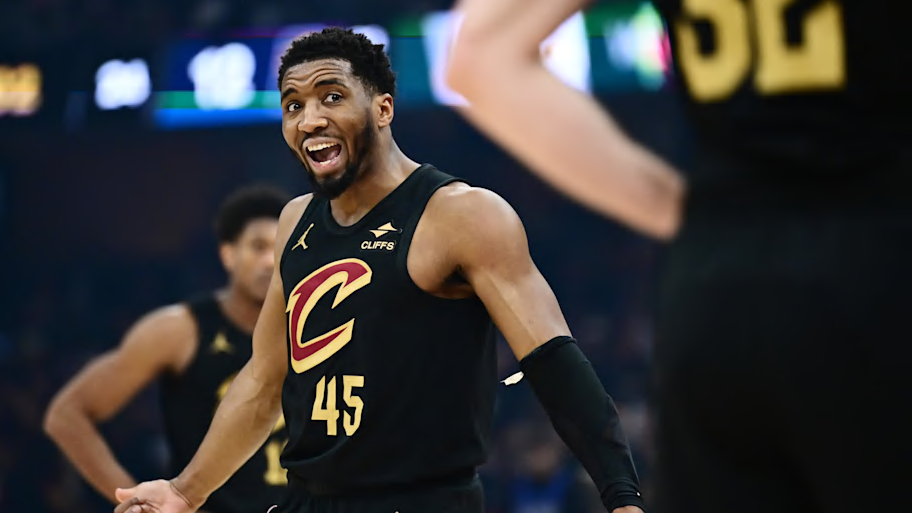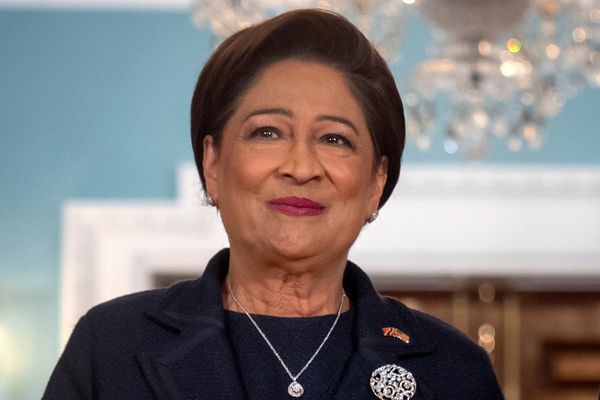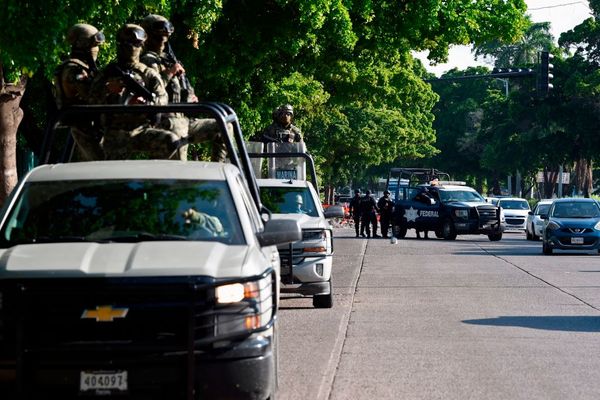
For years, decades even, the Eastern Conference has been regarded as the West’s little brother. Sure, the occasional super power would emerge—LeBron James’s Heat, James’s Cavaliers, the 2023–24 Celtics—but for the most part the Western Conference operated as the varsity, with the East the JV.
That opinion has likely never been stronger than before this season. The demise of Boston—for now, anyway—and the season-ending injury to Tyrese Haliburton has taken the last two conference reps off the board. What’s left are a couple of unproven contenders (Cleveland, Orlando), a conference finalist with a new coach (New York) and a handful of teams with major questions.
Still, someone has to come out of the conference. Can the Cavaliers carry regular-season success into the playoffs? Is Atlanta ready to break out? And just how far have the Celtics fallen? Here’s a look at our Eastern Conference playoff tiers.
The Contender Tier
Cleveland Cavaliers
Major additions: Lonzo Ball
Key losses: Isaac Okoro, Ty Jerome
Last spring, there was plenty of buzz about the Cavs’ offseason. Would Cleveland break up its small-ish backcourt of Donovan Mitchell and Darius Garland? Would Jarrett Allen be moved to clear the way for Evan Mobley to be a full-time center? Instead, the Cavaliers kept the core intact, editing the back end of the rotation.
There’s an argument for it. Continuity is enormously valuable in the NBA. Recent champions Denver, Boston and Oklahoma City all fell flat at different points before breaking through. The Cavs have been bounced out of the second round in back-to-back seasons—last season’s exit after a 64-win regular season was especially painful—but have the talent (Mitchell is a bona fide closer) and potential for organic growth (Mobley, who made huge strides last season, has yet to hit his ceiling) to break through without a major deal.
Cleveland won’t be as deep as it was last season. Max Strus is out for at least the next three months with a foot injury and the Cavs really need Ball to be a reliable playmaker/defender. But Cleveland was the class of the conference during the regular season last year and will enter this one as the favorite to come out of it.
New York Knicks
Major additions: Mike Brown, Jordan Clarkson, Guerschon Yabusele
Key loss: Tom Thibodeau
Believing in the Knicks comes down to whether you believe Brown is an upgrade over Thibodeau. The Knicks brought the band back from last season’s conference finalist, adding Clarkson and Yabusele to the mix. I’m not overly bullish on either; Clarkson’s efficiency numbers have gone the wrong direction in recent years (he did shoot 36.2% from three last season, so there’s that) and I’m not yet sold on Yabusele as a contributor to a contending team. Still, both are legit rotation players Brown can turn to, something Thibodeau lacked last season.
Expectations for the rest of the roster should be similar. Jalen Brunson is an established All-NBA lead guard who is among the most clutch scorers in the league. OG Anunoby was both productive (18 points per game) and durable last season (74 games), something he had not been in recent years. Mikal Bridges was uneven but his shooting numbers weren’t as bad as people think. Karl-Anthony Towns had a monster offensive season and I’m betting more minutes alongside a healthy Mitchell Robinson will mask his defensive deficiencies.
Can Brown bring it all together? Brown may have gotten a raw deal in Sacramento but he’s had a few cracks at head coaching, with mixed results. Knicks brass love his willingness to collaborate (a big word in New York) and believe his offensive philosophies will create a more modern, free-flowing offense. But the bar has been set. Success is the Finals. Failure is anything else.
Orlando Magic
Major addition: Desmond Bane
Key losses: Kentavious Caldwell-Pope, Cole Anthony, Gary Harris
Yes, I’m that bullish on Orlando’s chances this season. Injuries derailed the Magic’s chances of making the kind of second-round run last season that would have inspired more optimism, but a team with this defense (second in defensive rating, first in points allowed, first in most games allowing fewer than 100 points, etc.) and an addition like Bane is a serious threat in the East.
Bane is wildly underrated. He’s a career 41% three-point shooter who is close to an automatic 20 points per game. The Magic’s greatest needs were scoring and shot creating. Bane provides both. The price was steep (most notably the four first-round picks), but when you have Paolo Banchero and Franz Wagner and are staring down the second apron, you take big swings when you can.
Are the Magic ready? They have been battle-tested in the playoffs the last two seasons but have yet to break out of the first round. History suggests there will be a learning curve with this group that may stall its run in the second round. Still, if Orlando can maintain its defensive identity and gas up its anemic offense (27th in efficiency last season), this team can make a run.
The Middle Tier
Atlanta Hawks
Major additions: Kristaps Porziņģis, Nickeil Alexander-Walker, Luke Kennard, Asa Newell
Key losses: Clint Capela, Caris LeVert, Terance Mann
I absolutely love what Onsi Saleh did in Atlanta. The new Hawks GM is pushing all his chips in on this season. He acquired Porziņģis, signed Alexander-Walker and Kennard and retooled the end of the bench. At the same time he didn’t sign Trae Young, who can opt out of his contract after this season, to an extension. Instead, he gave Young the pieces he can win with. If it works, a new contender will emerge in the East. If it doesn’t, the Hawks could be rebooting the roster next summer.
Will it work? A still unexplained illness derailed the end of last season for Porziņģis in Boston, but at his best he is the kind of pick-and-pop player Young should thrive with. Alexander-Walker is a gritty defender who has shot in the high 30s from three the last two seasons. And the Hawks are super bullish on Jalen Johnson, who played just 36 games last season.
There is some serious depth in Atlanta. Dyson Daniels is coming off a Defensive Player of the Year–caliber season. Kennard is a proven three-point sniper. Zaccharie Risacher’s numbers after the All-Star break (14.6 points, 40.7% from three) suggest there could be a strong sophomore year coming. On paper, the Hawks look like a serious threat.
Milwaukee Bucks
Major additions: Myles Turner, Cole Anthony, Gary Harris
Key losses: Damian Lillard, Brook Lopez, Pat Connaughton
Milwaukee gets an A for effort. Eating the last two years of Lillard’s contract created the flexibility to sign Turner, which (for now) seems to have kept Giannis Antetokounmpo happy. But it’s hard to rank the Bucks anywhere but in the middle of the pack given what they have around them.
Kyle Kuzma was kind of meh in 33 games with the Bucks. Perhaps a full training camp squeezes more out of him. The real problem is in the backcourt. Kevin Porter Jr. has breathed life back into his career, but he’s not a starter. Neither is Anthony, who was a solid contributor for five years in Orlando. Gary Trent Jr., AJ Green, Taurean Prince and Harris are solid but Milwaukee will begin the season with the worst backcourt of any would-be contender. And worse than some others.
Can Antetokounmpo drag them to success? He is still a top-five talent and arguably the best two-way player in the NBA, but the Bucks have had three consecutive first-round exits and this is the weakest roster Milwaukee has had since winning the 2021 title. Bucks GM Jon Horst will need to pull another rabbit out of his stocking cap to elevate this team into contention.
Detroit Pistons
Major additions: Duncan Robinson, Caris LeVert
Key losses: Dennis Schröder, Tim Hardaway Jr., Malik Beasley
Detroit was the surprise story of the NBA last season, generating a 30-win improvement and making the playoffs for the first time in six years. Cade Cunningham emerged as a true franchise player while veteran additions (Beasley, Hardaway, Tobias Harris) proved to be exactly what a young team needed.
The Pistons’ ability to take another step will hinge on the continued development of that young talent. Cunningham is a stud, a Luka Doncic–like offensive player with a complete game. Jaden Ivey was limited to 30 games last season—Detroit needs more from him. Ausar Thompson is an elite defender. Now the Pistons need him making more jump shots. Same with Ron Holland, who played 81 games last season. In the frontcourt, Jalen Duren and Isaiah Stewart need to bring more to the table.
Detroit should be able to handle the loss of Hardaway, Beasley and Schröder. Robinson is a 40-ish% three-point shooter and LeVert is a solid scorer who can absorb some playmaking responsibilities. With Cunningham at the helm, Detroit should be in the 45-to-50-win range—with a chance to achieve more.
Philadelphia 76ers
Major additions: Trendon Watford, VJ Edgecombe, Johni Broome
Key losses: Guerschon Yabusele
It’s a little weird that nobody seems to be talking about the 76ers. Last season was a start-to-finish disaster. Joel Embiid’s offseason injury wrecked any chance of contending, Paul George’s exit killed any hope of making the playoffs and Philly slumped to its lowest win total since the Process years.
Still, there’s no denying the Sixers’ talent. Embiid is 31 and when healthy—an ever-present caveat—is among the best players in the league. George is a capable wingman and Tyrese Maxey is an All-Star. Jared McCain’s return should blunt the loss of Yabusele and the uber-athletic Edgecombe should be good enough as a rookie to crack the rotation. I’ve got them in the middle tier now, but if Embiid can play in the 60-ish-games range and be healthy going into the playoffs, Philadelphia can win the conference.
By the way, I’m listing Broome as a major addition because I expect him to be a rotation player next season. The entire league is going to regret passing on him. Believe that!
Miami Heat
Major additions: Norman Powell, Dru Smith, Kasparas Jakučionis, Simone Fontecchio
Key losses: Duncan Robinson, Kevin Love, Kyle Anderson, Haywood Highsmith
Listen—the Powell deal was interesting. Adding Powell, a fringe All-Star last season, for some back-of-the-rotation filler was a nice move by Pat Riley. A bottom third of the NBA offense will add a 21 ppg scorer who shoots better than 40% from three. Powell has the kind of swagger that should fit in well in Miami and on an expiring contract, you know he will be motivated.
He doesn’t make the Heat a conference contender but with a little extra juice offensively, an improved version of Kel’el Ware, a better version of Jaime Jaquez Jr. (what happened to him last season?) and some of that Miami magic, the Heat could muscle their way into the middle of the playoff field.
First-Round Fodder Tier
Boston Celtics
Major addition: Anfernee Simons
Key losses: Jayson Tatum (injury), Jrue Holiday, Kristaps Porziņģis, Al Horford, Luke Kornet
You can’t help but think the Celtics just want to hit fast forward on the season. There’s still plenty of firepower on the perimeter, with Jaylen Brown, Derrick White and Payton Pritchard returning. But in the aftermath of Tatum’s likely season-ending injury, the Celtics gutted the rest of the rotation. Neemias Queta and Luka Garza figure to fight over center minutes. Chris Boucher could be the starting power forward. For Boston, this season could spiral quickly.
And maybe that’s what the Celtics want. Boston owns its 2026 pick and will enter next season with Tatum, Brown, White, Pritchard and Sam Hauser under contract. They traded Georges Niang to get under the second apron, and they could move Simons to get under the luxury tax entirely. That won’t do anything to improve the team this season, but it will set them up for flexibility next season and beyond.
Given the state of the conference, the Brown/White/Pritchard trio could compete for a play-in spot. But every move Boston has made indicates this season will be a gap year for a team with high hopes in the years after.
Chicago Bulls
Major additions: Isaac Okoro, Noa Essengue
Key loss: Lonzo Ball
You can kinda, sorta see a plan in Chicago, with the Bulls rebuilding around 20-somethings like Josh Giddey (who is expected to get some kind of long-term deal worked out), Matas Buzelis, Coby White, Patrick Williams and Okoro. Add Essengue, a teenage rookie, and it’s a step forward for a team that for years has built a roster with a shockingly low ceiling.
It will be interesting to see what Chicago does with Nikola Vučević, who is in the last year of his contract and doesn’t fit the Bulls’ youth movement. There could be a decent market for Vučević by midseason, which would give Chicago a chance to nab some more draft capital. That won’t help a team that was already struggling to score and while Okoro beefs up the perimeter defense it won’t be enough for the Bulls to compete for anything more than a play-in spot.
Toronto Raptors
Major additions: Sandro Mamukelashvili, Collin Murray-Boyles
Key loss: Chris Boucher
Count me as curious about the Raptors. They continue to build around versatile wings, adding Brandon Ingram (who didn’t play a minute for Toronto after being acquired from New Orleans at the trade deadline) and Murray-Boyles to the mix. Ingram is a big-time scorer whose skills could be a nice complement to Scottie Barnes. And I saw some Thaddeus Young in Murray-Boyles; he could develop into a versatile, two-way player, more if he can develop a reliable three-point shot.
Toronto has struggled mightily the last two seasons, partly because it has not been able to field a healthy roster. But if Ingram can stay on the floor and if his skills mesh with Barnes and if RJ Barrett continues to develop in Toronto and if new basketball boss Bobby Webster can find a way to fortify the backcourt around Immanuel Quickley, a .500-ish season is in play.
Indiana Pacers
Major addition: Jay Huff
Key losses: Tyrese Haliburton (injury), Myles Turner
As painful as it was for Celtics fans to watch Tatum go down with an Achilles tear in the conference finals last season, it had to be doubly worse for Indiana, which was surging in Game 7 of the Finals before Haliburton’s Achilles snapped. Adding insult to injury, Turner bolted for a division rival, leaving the Pacers without their two top stars.
Indiana will still be feisty defensively, and I’m taking the over on whatever the line is on Bennedict Mathurin’s scoring average. But absorbing two major losses will be too much to overcome. It’s a brutal break for a small-market team that did everything right.
More NBA on Sports Illustrated
This article was originally published on www.si.com as NBA Eastern Conference Tiers: These Unproven Contenders Could Make a Leap in 2025.







